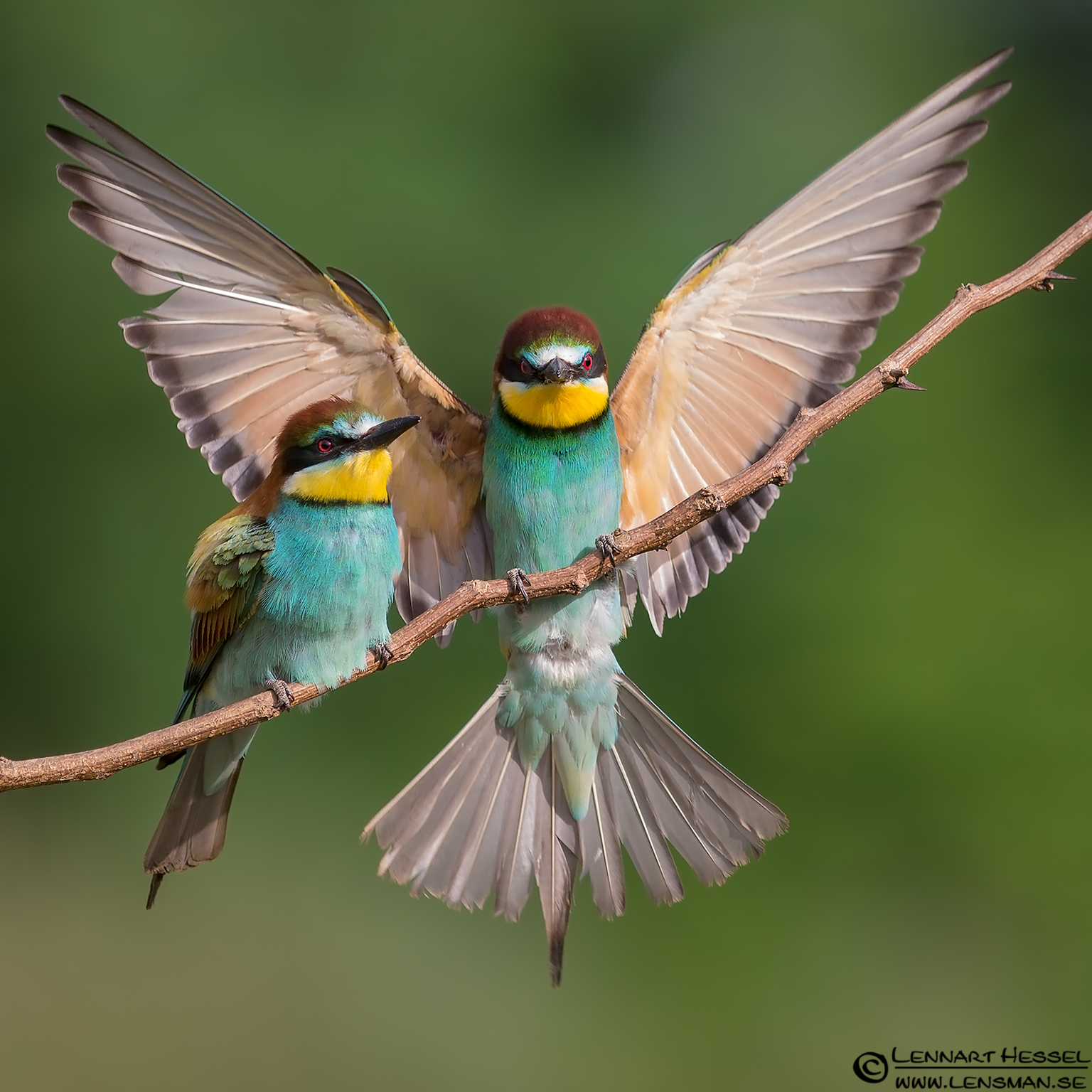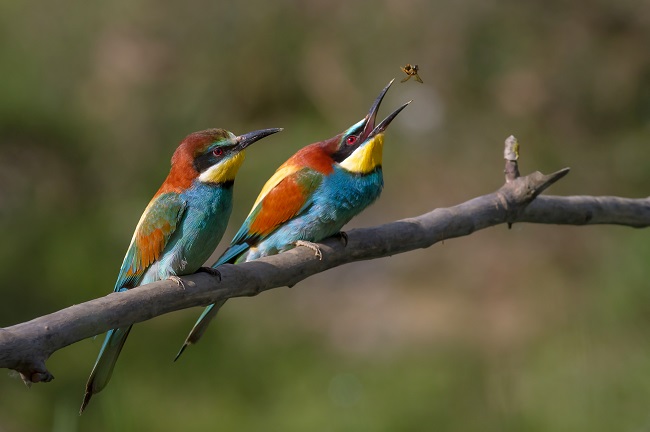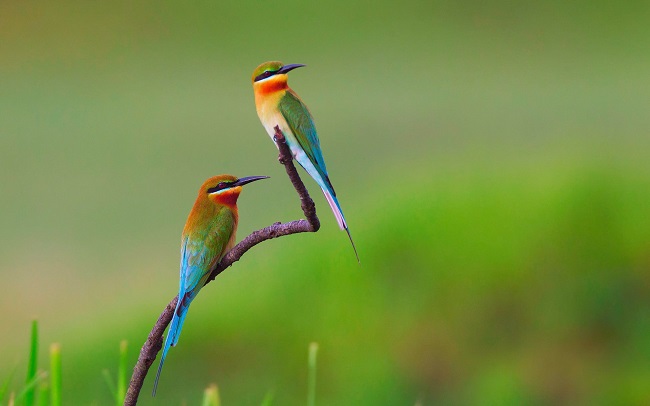Going on a bee hunt

Dhaka, 1, April, 2020: As the name suggests, European bee-eaters eat bees – as well as other insects. They catch them in midair, carry them to a perch and pound them to rub out the venom, making them safe to eat. One of Europe’s most colourful birds, they are still an unusual sight in the UK although sightings have increased in recent springs – something thought to have been influenced by climate change. You can find them throughout southern Europe, especially in nature reserves and parks. These two are enjoying the abundant sunshine in the Extremadura region of Spain, known as a great area for birdwatching.
Bee-eaters birds in the family Meropidae.
There are 27 species bee-eaters.
They are found from Europe to Australia. The center of diversity of the family is Africa, although a number of species also occur in Asia. Single species occur in each of Europe, (the European bee-eater), Australia (the rainbow bee-eater) and Madagascar (the olive bee-eater, also found on mainland Africa).
They inhabit a variety of habitats depending on what regional environments including forest, savanna, shrubland, grassland, and agricultural areas.
The average lifespan is 5 to 6 years in the wild.
They are characterised by richly colored plumage, slender bodies, and usually elongated central tail feathers.
Brilliant plumage is characteristic; green predominates, but many species are partially colored with red, yellow, blue, or purple.
Male and female plumages are usually similar.
Bee-eater’s bill is moderately long, slightly downcurved, and sharply pointed.
Bee-eaters have one of the most complex social systems of any bird species. Many species (but not all) are monogamous, cooperative breeders living in large colonies of over 100 birds, but can reach 200 birds if conditions are favorable.
Each bird lives in an extended family with members of four overlapping generations. They appear to recognize parents, siblings, offspring, friends, and nesting neighbors, likely from voice recognition. This cooperative behavior vastly improves survivorship of chicks. Females leave their natal group to join her mate’s family.
Many bee-eater names reflect their flashy feathers if not the lack of imagination of the namers: red-throated, blue-headed, black-headed, red-bearded, purple-bearded, blue-cheeked, and cinnamon-chested, white-fronted, rosy, and little green bee-eaters.
They form colonies, nesting in burrows tunnelled into vertical sandy banks, often at the side of a river or in flat ground. As they mostly live in colonies, large numbers of nest holes may be seen together. The eggs are white, with typically five to the clutch.
All bee-eaters are earth-hole nesters, digging their tunnels with an oval chamber at the end for eggs. They lay a single clutch annually.
As their name suggests, bee-eaters predominantly eat flying insects, especially bees and wasps, which are caught in the air by flights from an open perch. The stinger is removed by repeatedly hitting and rubbing the insect on a hard surface. During this process, pressure is applied to the insect, thereby extracting most of the venom.
One white egg is laid each day until the typical clutch of about five eggs is complete. Incubation starts soon after the first egg is laid, with both parents sharing this duty in the day, but only the female at night. The eggs hatch in about 20 days, and the newly hatched young are blind, pink and naked. For most species, the eggs do not all hatch at the same time, so if food is in short supply only the older chicks survive. The chicks are in the nest for about 30 days.
The International Union for Conservation of Nature (IUCN) assesses species vulnerability in terms of total population and the rate of any population decline. None of the bee-eaters meet the IUCN vulnerability criteria, and all are therefore evaluated as “Least-concern species”.
Bee-eaters were mentioned by ancient writers such as Aristotle and Virgil, who both advised beekeepers to kill the birds.
Aristotle knew that bee-eaters nested at the end of tunnels up to 2 metres (6.6 ft) long and the size of their clutch. He said that nesting adults were fed by their own young, based on the observed actual help at the nest by related birds.
In Greek mythology, the Theban Botres was fatally struck by his father when he desecrated a ritual sacrifice of a ram to the god Apollo by tasting the victim’s brains. The god took pity on him, turning him into a bee-eater.
Source: http://justfunfacts.com/interesting-facts-about-bee-eater/





